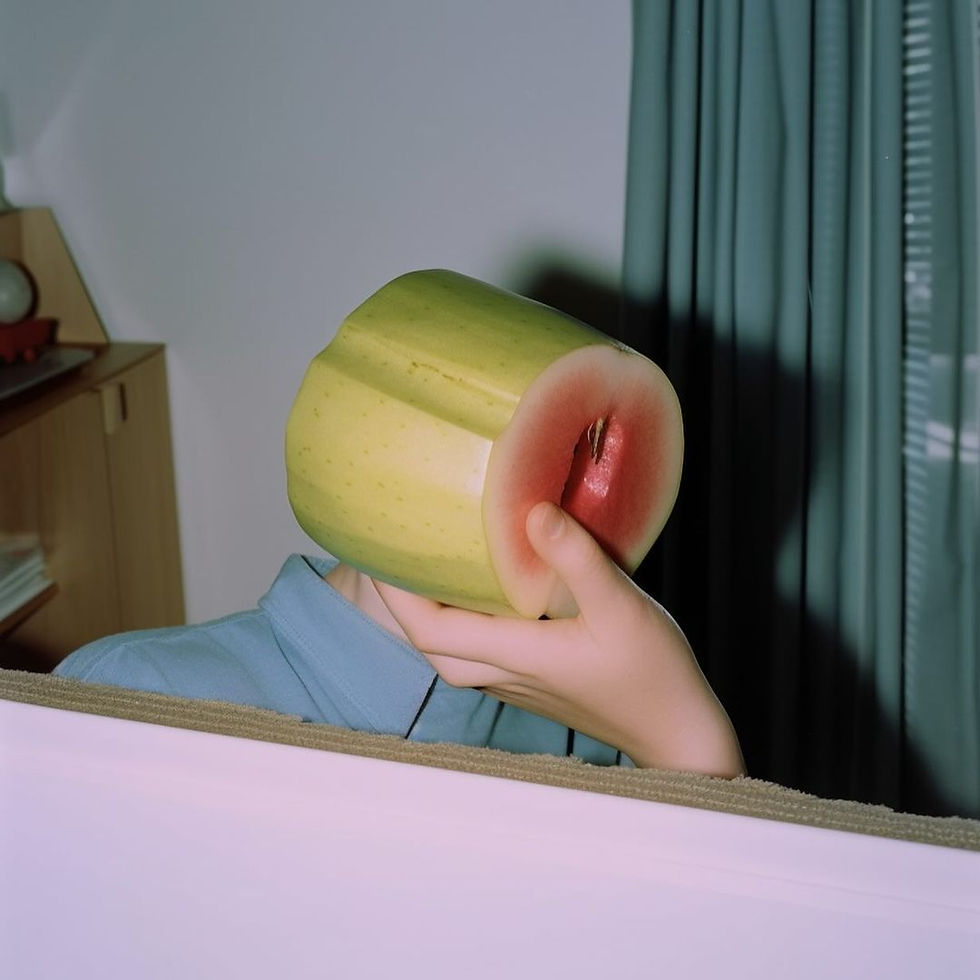Charlie Engman | Art Director & Photographer
- Onur Çoban

- Apr 28, 2024
- 3 min read

The works of photographer, director, and art director Charlie Engman, who resides in Brooklyn, push the boundaries of traditional image creation. We had a conversation with Charlie, who works as the Art Director at Collina Strada, constantly pushing the creative and conceptual boundaries of the contemporary, sustainable brand through his works and production practice.

Who is Charlie Engman? Can you briefly tell us about yourself?
I am an artist and educator living in New York City. I work primarily with representational visual media such as photography and AI-generated art, and I am also the art director for the sustainable fashion brand Collina Strada.
As an artist pushing the boundaries of traditional visual production, what elements of your art do you most enjoy exploring and experimenting with?
In my art practice, I am generally interested in looking at and playing with social structures as they manifest in visual culture. I enjoy forcing seemingly opposite or unrelated elements together—doing “the wrong” thing—and trying to make them work—trying to turn it into “the right” thing.

As a pioneer in AI art, you are constantly researching and pushing the boundaries of the medium. What topics interest you in this field, and what do you hope to do with AI in the future?
I think AI presents amazing opportunities for creative expression. It creates imagery by aggregating and reproducing common visual symbols, but because it has no direct experience of anything it depicts, it often makes very compelling and instructive mistakes.
AI is also relatively easy to learn and use now, so it has the potential to lower the barrier to entry for art-making in interesting ways.
My hope is that in the future AI retains a level of chaos in its processes so that users cannot exert maximum control over it (the mistakes are important!), and I hope people start to use it as a way to share resources rather than hoard or gate-keep them.
“That said, I think it also has the potential to do great harm if we take its capabilities for granted and do not advocate urgently for social systems that will protect us from the shifts it will inevitably cause in our relationship to work, labor, and value.”
Can you tell us a bit about your production process? How do you balance creativity and technical skills in the design process?
It really depends on the project and medium. I do my best to be reactive to the needs at hand, rather than coming into a situation with an overly predetermined method. I have an overarching set of values and tendencies, and I trust that they will lead to a successful and coherent outcome. I also don’t see creativity and technical skill as adversarial at all. Ideally they complement each other.
So far, you have collaborated with global brands such as Prada, Marni, Adidas, Hermès, Kenzo, Nike, Vivienne Westwood, and Stella McCartney. As a result of your collaboration with these brands, what has been the most exciting work for you regarding the design process and the final product?
My favorite part about working with big brands like these is that I get to work with incredible collaborators. I’ve learned so much from the set designers, stylists, beauty teams, and producers I meet through these projects. Picking favorites is against my nature and is bad for business, so I won’t go into specifics.

Can you tell us a bit about the sources of inspiration behind your work? Who are the names you follow with curiosity in this field or different disciplines?
I’m in a bit of a hermetic period right now, where I don’t look at much art; I am easily distracted by the institutional aspects of the art and fashion worlds, and it’s important for me to disconnect periodically in order to stay present with myself and my work. I’m getting most of my inspiration these days from literature and political theory, I think. Rachel Cusk, Brontez Purnell, Yanis Varoufakis, and The Or Foundation have been very important to my thinking lately.
Are you excited for the future, and what are your plans?
I, like everyone, am nervous about the future, but the only way to survive it is to be excited!! Pessimism is boring (<reminder to self). I recently made a half-text-half-image book, and I’m curious to learn more about writing and writing’s relationship to pictures.

















































